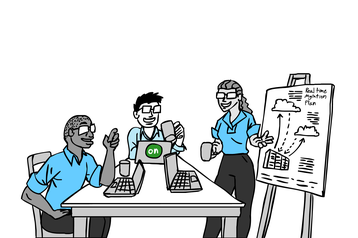It’s that time of year when industry commentators are weighing in with their predictions and projections for the year ahead.
While the subject of cloud computing is a big topic, probably one of the most pressing subjects hitting the headlines in 2018 is increasing regulations relating to GDPR. However, there are a few other cloud-related topics that I would like to put the spotlight on as we look at the anticipated growth areas for cloud service providers in the year ahead. In particular, I’d like to focus on cloud storage, DRaaS, multi-cloud and data security.
Growth of cloud storage
Cisco estimates that the total cloud storage market will increase from 370 exabytes in 2017 to 1.1 zettabytes in 2018 which reinforces that this will be a particular growth area for cloud service providers. Increased regulation has driven requirements for several copies of backup data – on-premises, off-site or in the cloud and in certain industries, legislation requires longer term retention of data, often up to 10 years.
According to a 2017 Gartner survey, 42 percent of respondents said they would be looking to implement cloud backup in the next year, while 13 percent said they were already doing so. Increased availability of high-speed fiber broadband, as well as FTTP and MPLS circuits, means backup to the cloud has become much more accessible for small to medium sized businesses.
Over the last year, we have seen massive growth in the take-up of cloud backup offerings. Cloud backup is probably one of the easiest cloud services to test and adopt.
Growth of disaster recovery as a service (DRaaS)
Statistics from Gartner indicate that the DRaaS market is set to grow from $2.01bn in 2017 to $3.7bn by 2021. The fact that 2017 has seen a great deal of natural disasters around the world, from hurricanes and floods to wild fires, has exacerbated this. As a result we have seen customers rushing to buy DRaaS services, and existing customers invoke their DRaaS for real. One organization in Florida was able to go from having no disaster recovery to having a fully replicated and tested solution within five days as Hurricane Irma swept in.
Aside from natural disasters, the rise of ransomware has been another important driver for DRaaS. The very low RPOs often make DRaaS a better solution than backing up and recovering data on a daily basis. As with cloud backup, the increased availability of high-speed fiber broadband has made DRaaS replication across the Internet much more achievable for most customers.
Multi-cloud strategies are taking off
It’s hard to deny the massive shift that is taking place among businesses in favor of multiple cloud environments, including public and private clouds, as well as on-premises infrastructure. As businesses deploy new applications and move critical workloads to save money and boost agility, it’s safe to say that the trend of mixing and matching cloud environments will only accelerate.
According to Gartner, the IaaS market grew 31.4 percent in 2016. While the hyper-scale providers accounted for the lion’s share of this figure, others in the market saw a 13.2 percent growth. 451 Research predicts that IaaS will continue to grow from an estimated $16bn in 2017 to $30bn in 2021.
Cloud lock-in is seen as an issue with many hyperscale cloud service providers. There is concern that many businesses lack contingency plans should they wish to switch from one provider to another, likewise they may want to stagger the risk and use more than one cloud provider. For example, in heavily regulated industries organizations are strongly advised not to put all of their eggs in one basket.
GDPR compliance and security
For many years security was seen as a hindrance to cloud adoption. Now, in most cases, security is covered by the cloud provider and their vendor partners.
GDPR has created increased requirements for security and compliance around data ownership, access, and deletion, and, importantly, who is responsible for the data.
Richard Stinton is enterprise solutions architect at iland



